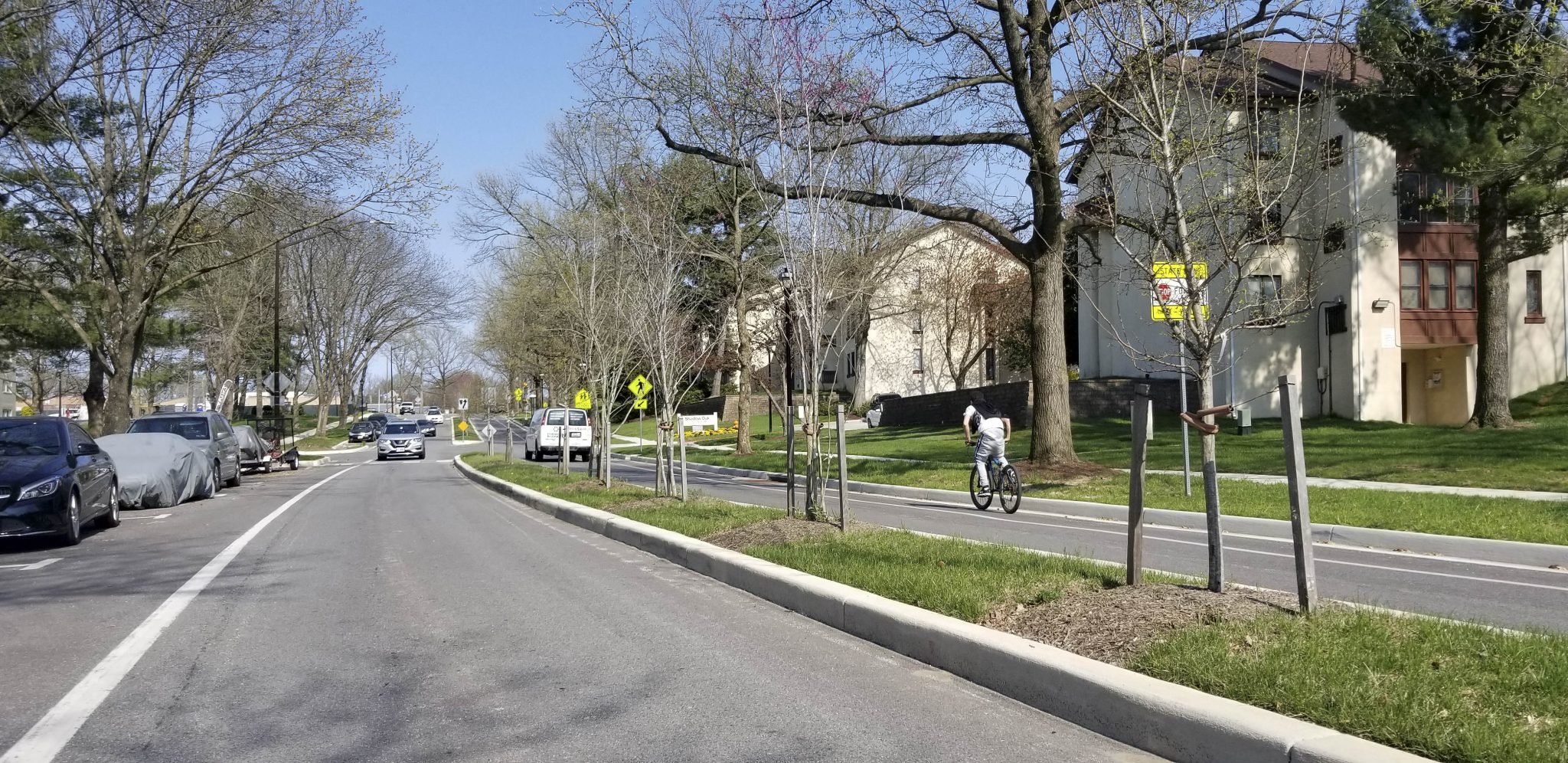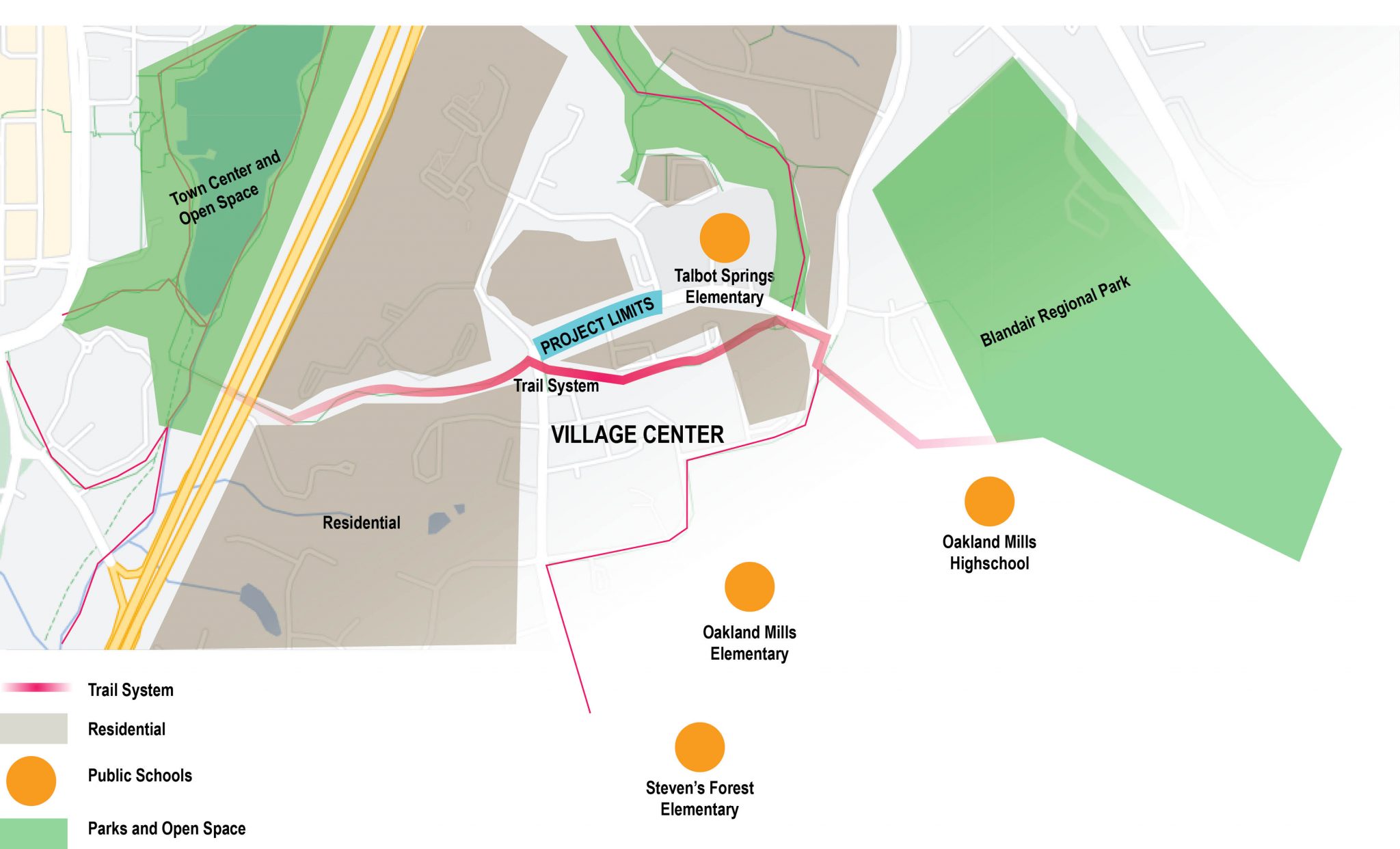
A Complete Streets approach to a project streetscape brings equity to options of mobility. The result is one which enhances and emphasizes safety for both pedestrians and cyclists and moves them to the top of the transportation pyramid, creating a healthier public transportation environment, strengthening the diversity of our infrastructure.
We agree – the devil is in the details, and in some cases it’s the details themselves. Drilling down into the details prematurely is often done at the expense of not fully understanding the context or big picture that encompasses the project. Understanding these Context Sensitive Solutions by first looking down from 30,000 feet results, not only in a more creative process, but one that better steers a complete street project in the right direction, ensuring more equitable mobility for all users.
CONTEXT SENSITIVE SOLUTIONS: The White Acre Road Complete Street Pilot

Context
The White Acre Road Complete Streets Pilot Project first started out looking beyond the project’s limits at the adjacent roadways and surrounding residential and commercial site development of suburban Oakland Mills in Columbia, MD. There was a crucial need to address the mix of high pedestrian volumes during the school year to access Talbott Springs Elementary School, speeding traffic, and safe mobility options for pedestrians and cyclists. Ultimately, the project would provide improved connectivity for pedestrian and bicycle access to the new Blandair Regional Park and the Columbia Town Center in the opposite direction.

Sensitive
The Oakland Mills area is blessed with the benefit of having grand, mature street trees lining both sides of the streets throughout the community. That said, the roadways are typically narrow. This condition is found throughout Columbia; we had to think outside of the box on how to get bikes through the corridor safety. Where does the median go – how is the bike lane protected? The other key elements were accommodating a bike lane and the retention of curbside parking.
Solutions
MRA addressed the issue of vehicular speeding by a combination of proven traffic-calming solutions. Within the same roadway section, the travel lanes were narrowed, parking was eliminated on the south side, and bump-outs were provided on the north side to protect parked vehicles and provide shorter crossing distances for pedestrians. Rain gardens were provided in two of the bump-outs. A new median with trees was incorporated including refuge areas for pedestrians at street crossings. The combination of the reallocation of parking and the reduced travel lanes afforded the new median and bike lanes in both directions. Safety at night was enhanced with new pedestrian light fixtures.
We often see speed humps introduced as a knee-jerk reaction to slowing traffic. Unfortunately, they also create unsafe conditions for bicyclists, offer no environmental benefit, and are a short-term solution, often seen in disrepair. Projects like The White Acre Complete Street Pilot Project provide a precedent, controlling traffic through proven traffic-calming techniques. This maximizes benefits to alternative transportation modes and the environment, while minimizing maintenance, providing more equitable mobility, and elevating the level of comfort for cyclists and pedestrians, turning the street into a safer and more enjoyable public space for all.